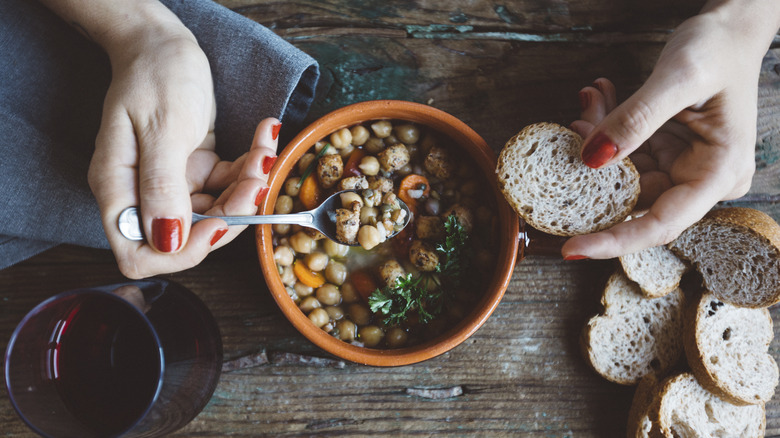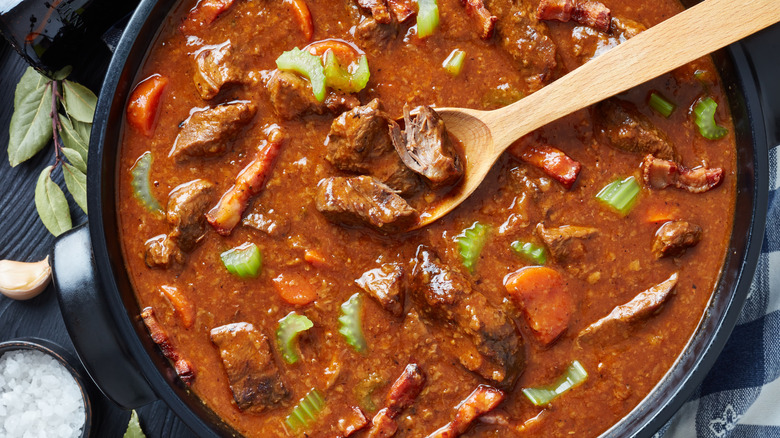What's The Actual Difference Between Soup And Stew?
If you've ever stewed over the question of what differentiates soup from stew, it may seem to boil down to a matter of semantics. However, the deeper you dive into the subject — spoon in hand — you may find what at first appears to be clear, is really as thick as pea soup. While there is some crossover between these two foods, there are some fairly distinct differences as well. Both are often cold-weather meals (though there are some warm-weather soups like gazpacho, too) that include many of the same ingredients, like meat, seafood, vegetables, and aromatics, that are cooked in a liquid.
Typically, soup contains a higher ratio of liquid to ingredients than stew does. This often means a stew is thicker than a soup (and is sometimes thickened even more with the addition of a roux made from flour and oil or butter), but this can quickly become a murky subject. There are certain kinds of soups that are quite thick, like the aforementioned pea soup. In fact, some cooks like to thicken a variety of soups deemed too watery. This can be easily accomplished with a simple trick from legendary French chef Jacques Pépin: Add instant mashed potatoes. In the case of thick soups, we can still differentiate them from stews by looking at the cooking method.
A difference in cooking methods: stewing vs boiling
A stew, as the name suggests, is made by stewing a number of ingredients together, a cooking method that involves slowly simmering chunks of meat and vegetables immersed in a liquid. Beef stew, for example, often includes tougher pieces of beef that when slowly cooked in a Dutch oven, slow cooker, or similar device, at a low steady heat, become super tender. If using a Dutch oven, the trick is to keep the lid on so the moist heat can break down the meat's connective tissue. This is why continually lifting the lid during cooking — i.e. releasing all of that precious steam — is just one of a host of common mistakes cooks make with beef stew.
Typically, when making soup, the ingredients are brought to a boil before being simmered so the flavors can meld and deepen. Soup tends to take less time to make than stew. If you're wondering where the creamy and seafood filled bisques and chowders fall, it's in the soup category since they are not stewed. To break it down further, bisques are smooth while chowders are chunky. Now you know the difference between soup and stew, so you can stop stewing about it and get cooking.

